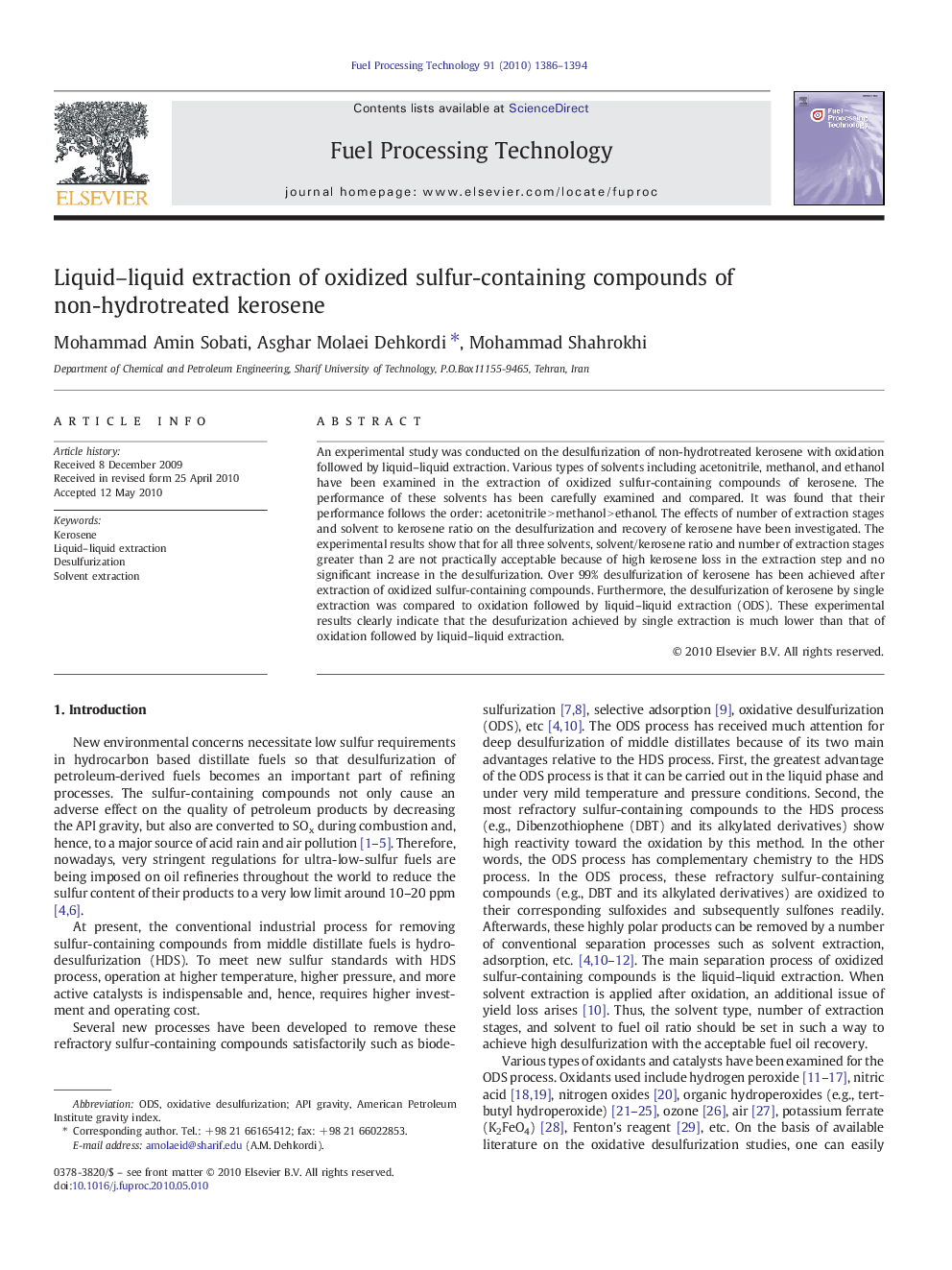| Article ID | Journal | Published Year | Pages | File Type |
|---|---|---|---|---|
| 210620 | Fuel Processing Technology | 2010 | 9 Pages |
An experimental study was conducted on the desulfurization of non-hydrotreated kerosene with oxidation followed by liquid–liquid extraction. Various types of solvents including acetonitrile, methanol, and ethanol have been examined in the extraction of oxidized sulfur-containing compounds of kerosene. The performance of these solvents has been carefully examined and compared. It was found that their performance follows the order: acetonitrile > methanol > ethanol. The effects of number of extraction stages and solvent to kerosene ratio on the desulfurization and recovery of kerosene have been investigated. The experimental results show that for all three solvents, solvent/kerosene ratio and number of extraction stages greater than 2 are not practically acceptable because of high kerosene loss in the extraction step and no significant increase in the desulfurization. Over 99% desulfurization of kerosene has been achieved after extraction of oxidized sulfur-containing compounds. Furthermore, the desulfurization of kerosene by single extraction was compared to oxidation followed by liquid–liquid extraction (ODS). These experimental results clearly indicate that the desufurization achieved by single extraction is much lower than that of oxidation followed by liquid–liquid extraction.
